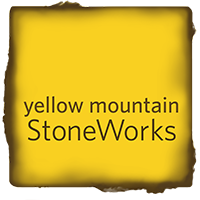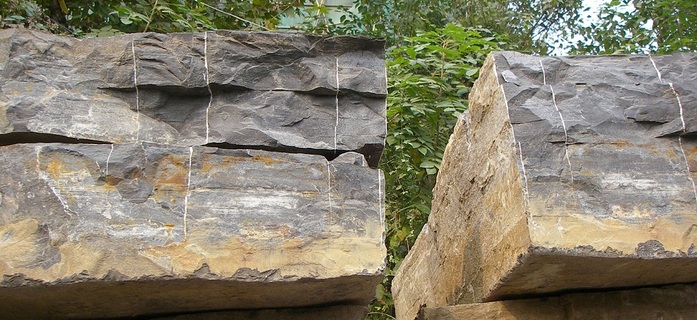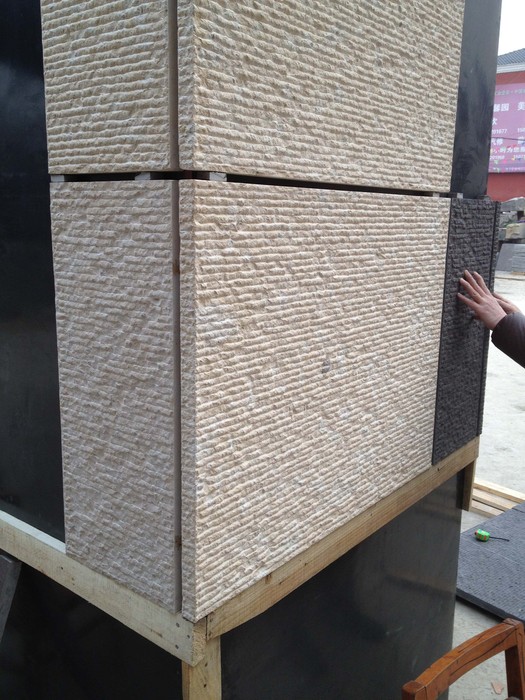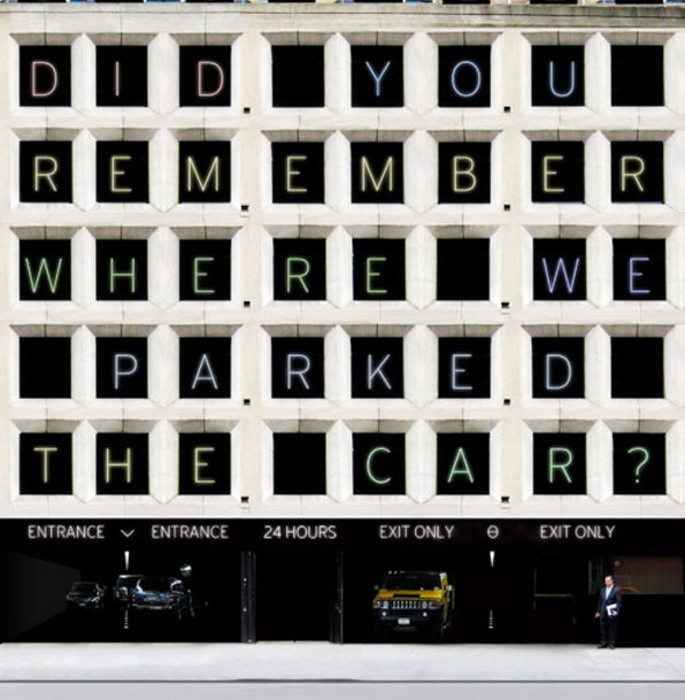Because stone is an organic material continuously influenced by elemental and human factors, designers and installers need to understand how different stones respond, both aesthetically and functionally, to different influences and over time. Testing stone against the demands of the finished project can be extremely helpful in selecting appropriate stones and finishes, preventing problems, and determining how a particular stone may perform after a given number of years. Armed with this knowledge, design and construction teams can make informed decisions and set realistic expectations.
“In essence, testing allows us to look into the future and predict how a given stone and finish is likely to perform in a specific design and environment,” explains Nicole Gelpi, Yellow Mountain StoneWorks Owner and Director of Marketing. “Testing provides a holistic picture of a stone which helps the project team collaborate on the best product and installation solutions.”
Advancing technology has created lab-based testing scenarios that can address a number of influential factors and be targeted specifically to the needs of an individual project, for example:
Freeze/Thaw Conditions: For projects located in environments with significant swings in temperature, testing looks at permeability and moisture absorption. When water freezes, it expands, which can lead to cracks and rupturing of material. During the thaw cycle, evaporation can cause minerals to crystallize, creating efflorescence deposits or pits on the surface of the stone. To test the effects of freeze/thaw conditions, the stone is immersed in water until it absorbs all the moisture it can and then frozen and thawed repeatedly. The integrity of the stone is based on X number of cycles along the continuum of testing.
Compressive Strength: Testing of compressive strength looks at the load capacity and can indicate how thick the stone needs to be to achieve the required strength. This is more likely to be an issue with softer stones, like sandstone. To test for compressive strength, increasing amounts of weight are put on top of the stone until it fails. The integrity of the stone is based on the average test results over multiple iterations using X number of sample sizes. Compressive strength testing, using scenario specific apparatus, can also determine a stone’s response to persistent weather conditions such as hail, wind, and salt spray.
Flexural Strength: The goal of flexural strength testing is to determine a stone’s ability to resist a load put on its surface asymmetrically, for example, a cantilevered stone with a load on the unsupported end. To test for flexural strength, the lab will cantilever a test section and then increase the unsupported load until it snaps, indicating the “bending moment.” The results of flexural strength testing can be particularly useful in indicating the best installation method for a given stone; for example, a sand set application with a pebble integrated in the subgrade can increase the flexural strength.
Chemical Resistance: When sulfurous, sulfuric, and nitric acids in polluted air react with the calcite in carbonate-based stones such as marble, travertine, and limestone, the calcite can dissolve resulting in roughened surfaces, removal of material, and loss of carved details. Testing involves exposing stone to chemical solutions resembling the acidity of the acid rain found in the relevant polluted environment. The integrity of the stone is based on X number of cycles along the continuum of testing.
Coefficient of Friction: Friction testing is used to determine slip resistance. A “slipping machine” is used to force of variety of replicated heels, i.e. barefoot, rubber soled shoes, high heels, etc., onto a stone at a given load to slide it sideways. Testing determines the coefficient of friction by showing the pounds of lateral thrust required to move the heel on the surface. Building codes require that exterior surfaces have a coefficient of friction of X, depending on use. Different finishes provide varying degrees slip resistance; testing multiple finishes allows us to help designers and builders achieve both aesthetic and functional requirements.
Testing stone is a proactive measure that allows a project team to evaluate different stones across multiple factors. Going beyond design and environment, test data can also influence decisions around budget and upkeep. For example, if test data shows that two different stones meet the strength and aesthetic requirements of a project, the team can confidently go with the less expensive option. In another scenario, if the owner has indicated they want a low maintenance solution, test data can help us to recommend stones and finishes that minimize maintenance.
On a final note, while testing can provide useful insight into a stone’s viability, it is not a guarantee of performance. “The reality is that installation trumps testing,” explains John Williams, Yellow Mountain StoneWorks Owner and President. “Testing results are based on simulated conditions that should inform the installation process specific to method, set material, drainage, air circulation, etc., but ultimately, the quality of the installation determines the performance of the stone.”
For a list of all relevant tests performed on dimensional stone, reference the standard guide published by ASTM International (formerly known as the American Society for Testing and Materials).



